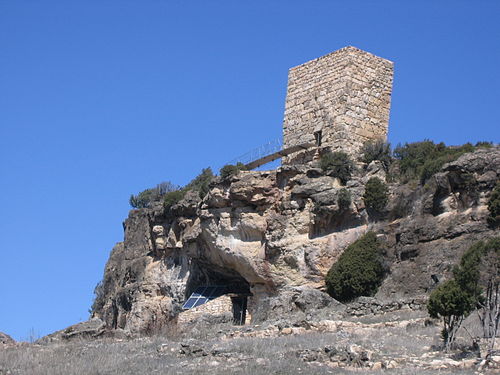This articlerelies largely or entirely on asingle source. Relevant discussion may be found on thetalk page. Please helpimprove this article byintroducing citations to additional sources. Find sources: "Cueva de los Casares" – news ·newspapers ·books ·scholar ·JSTOR(March 2025) |
| Cueva de los Casares | |
|---|---|
| Native name Cueva de los Casares (Spanish) | |
 | |
| Location | Riba de Saelices,Spain |
| Coordinates | 40°57′27″N2°17′27″W / 40.9575°N 2.290928°W /40.9575; -2.290928 |
| Official name | Cueva de los Casares |
| Type | Non-movable |
| Criteria | Monument |
| Designated | 1935 |
| Reference no. | RI-51-0001089 |

Cueva de los Casares is acave inRiba de Saelices (Province of Guadalajara,Castile-La Mancha,Spain). Discovered in 1933, it contains a number ofPaleolithiccave paintings, and is most notable for a series of paintings depicting what some have argued is the earliest representation of human understanding of thereproductive process, featuring images of copulation (perhaps mediated by a mysteriousshaman figure), pregnancy, childbirth, and family life.Mammoths and other animals feature frequently in the illustrations. It was declaredBien de Interés Cultural in 1935.[1]
There are many representations of animals, anthropomorphs (human-like figures), and ideograms (including penises, vulvas, tools, and more abstract images).
The cave and its paintings are little known to scholars outside Spain.
 | This article relating toarchaeology in Europe is astub. You can help Wikipedia byexpanding it. |
 | This article about a building or structure in theProvince of Guadalajara is astub. You can help Wikipedia byexpanding it. |